The UiS energy central will be filled with research and teaching on geothermal energy and electricity.
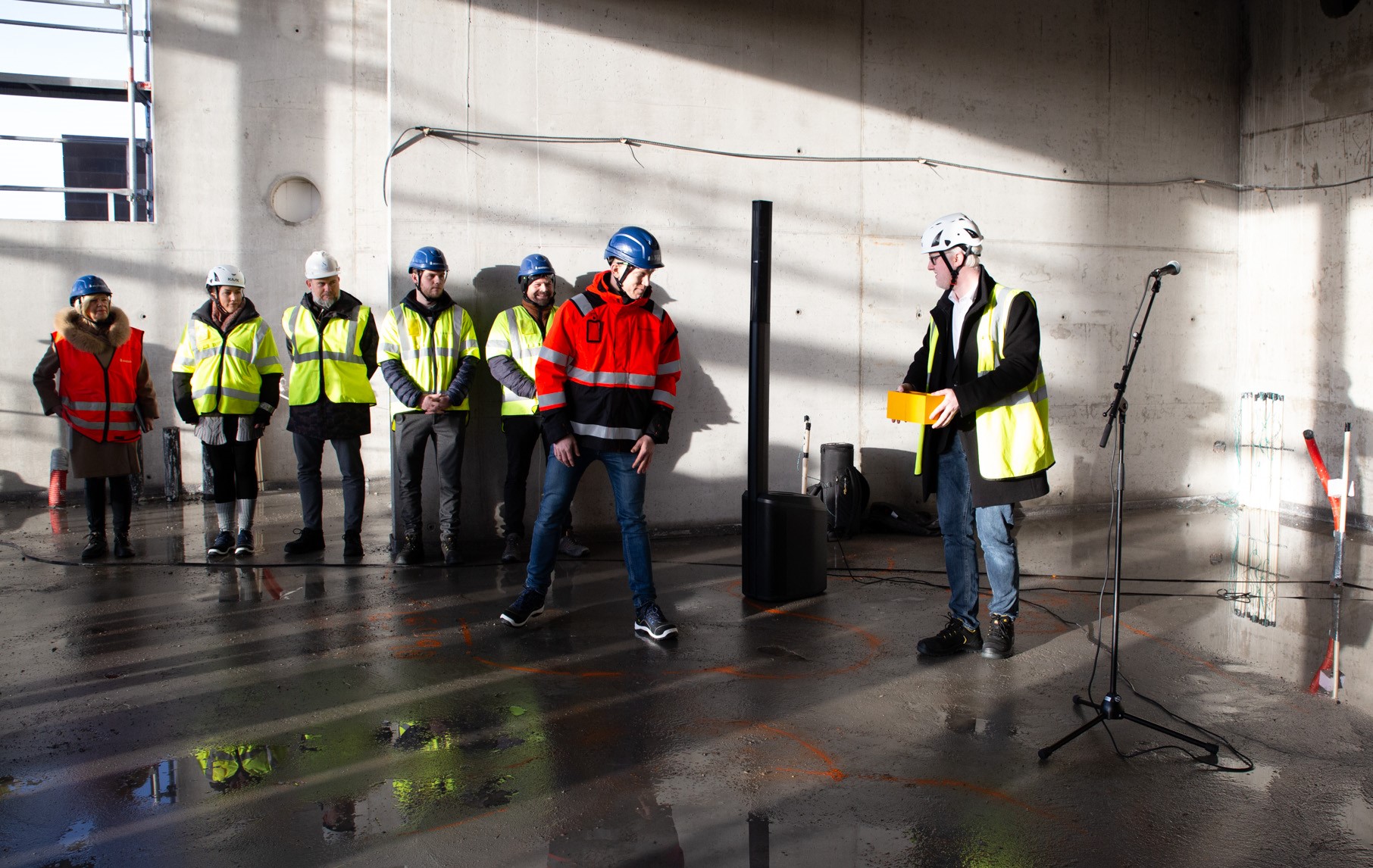
The new geothermal power plant on Campus Ullandhaug will cut the University of Stavanger's greenhouse gas emissions from energy consumption for heating and cooling by around 80 percent. The building will be completed in the fourth quarter of 2024.
Green transition is at the forefront of the University of Stavanger and is central to the strategy up to 2030.
"With Energisentralen, we sweep our own doors. This building is a particularly important contribution to UiS's goal of becoming self-sufficient in energy. In other words, there is good reason to mark the launch, and therefore we invite students, colleagues and partners to lay the foundation stone for the new building," said the UiS rector Klaus Mohn.
Mohn pointed out that the building is very expensive to build and that it has not been easy to establish such a geothermal heating centre on campus.
Elin Karfjell, director of property development and management at Statsbygg, pointed out that UiS will save several millions on electricity costs with the establishment of the Energisentralen. The figure shows that UiS will save around 60 percent of its electricity consumption.
"We need good cooperation in order to establish such a building of this caliber. UiS will have a future-oriented energy central that meets the needs of the future," said Karfjell.
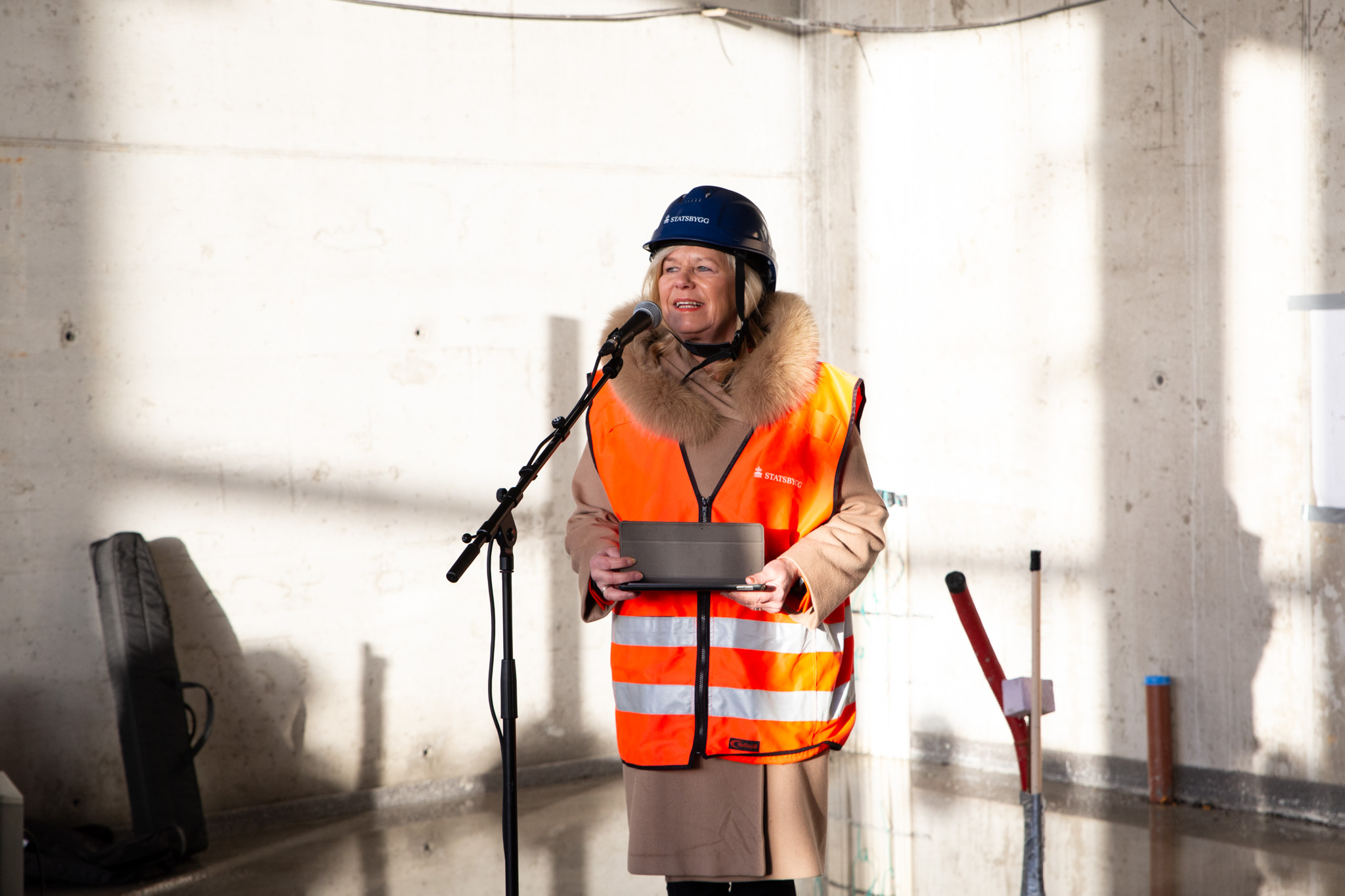
Elin Karfjell, director of property development and management at Statsbygg, pointed out that you have to work together to be able to create buildings of this caliber.
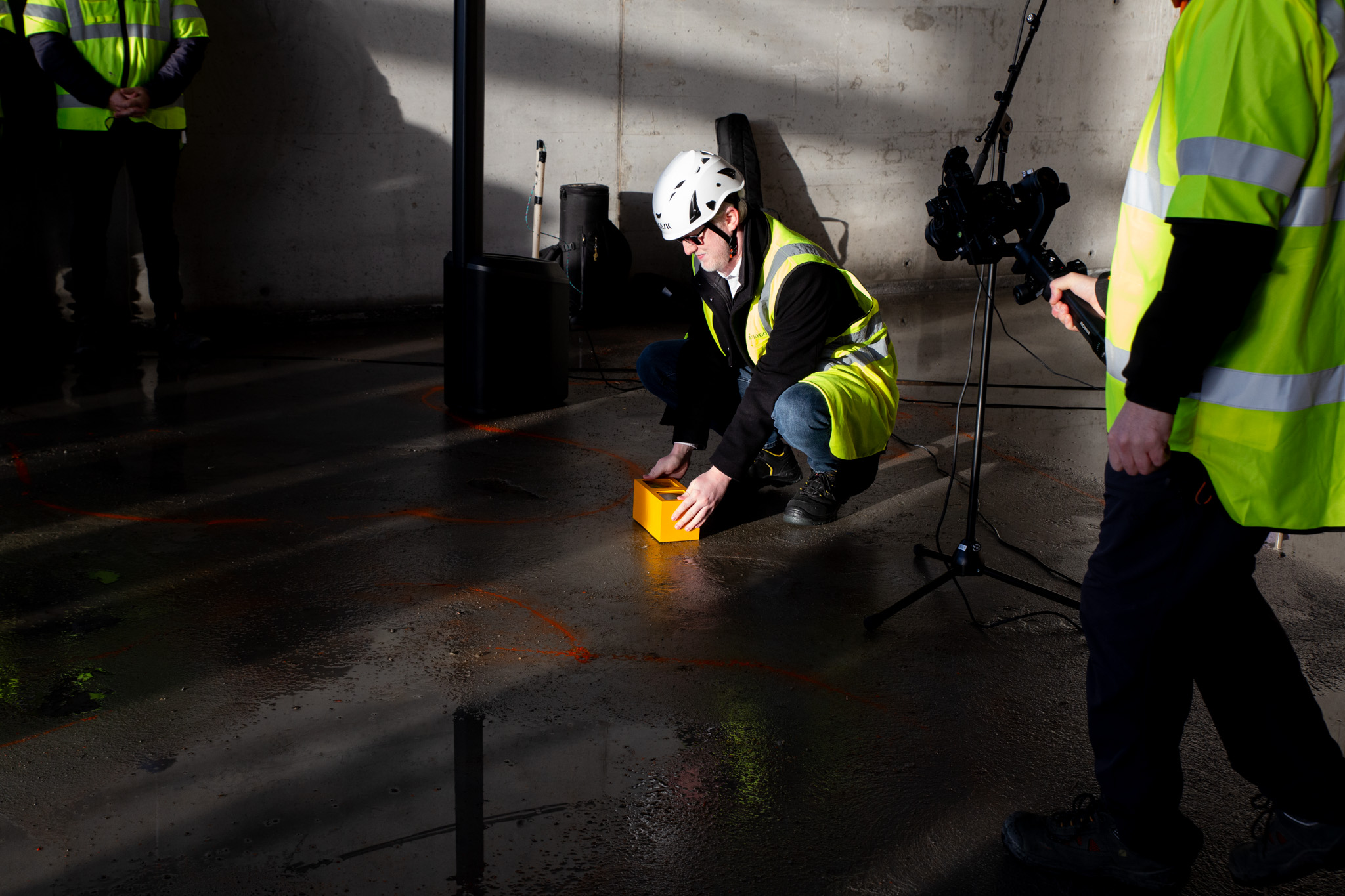
The student leader in StOr, Joakim Ramsland, put down a time capsule with UiS's strategy until 2030 to show the people of the future what UiS did to achieve the climate goals.
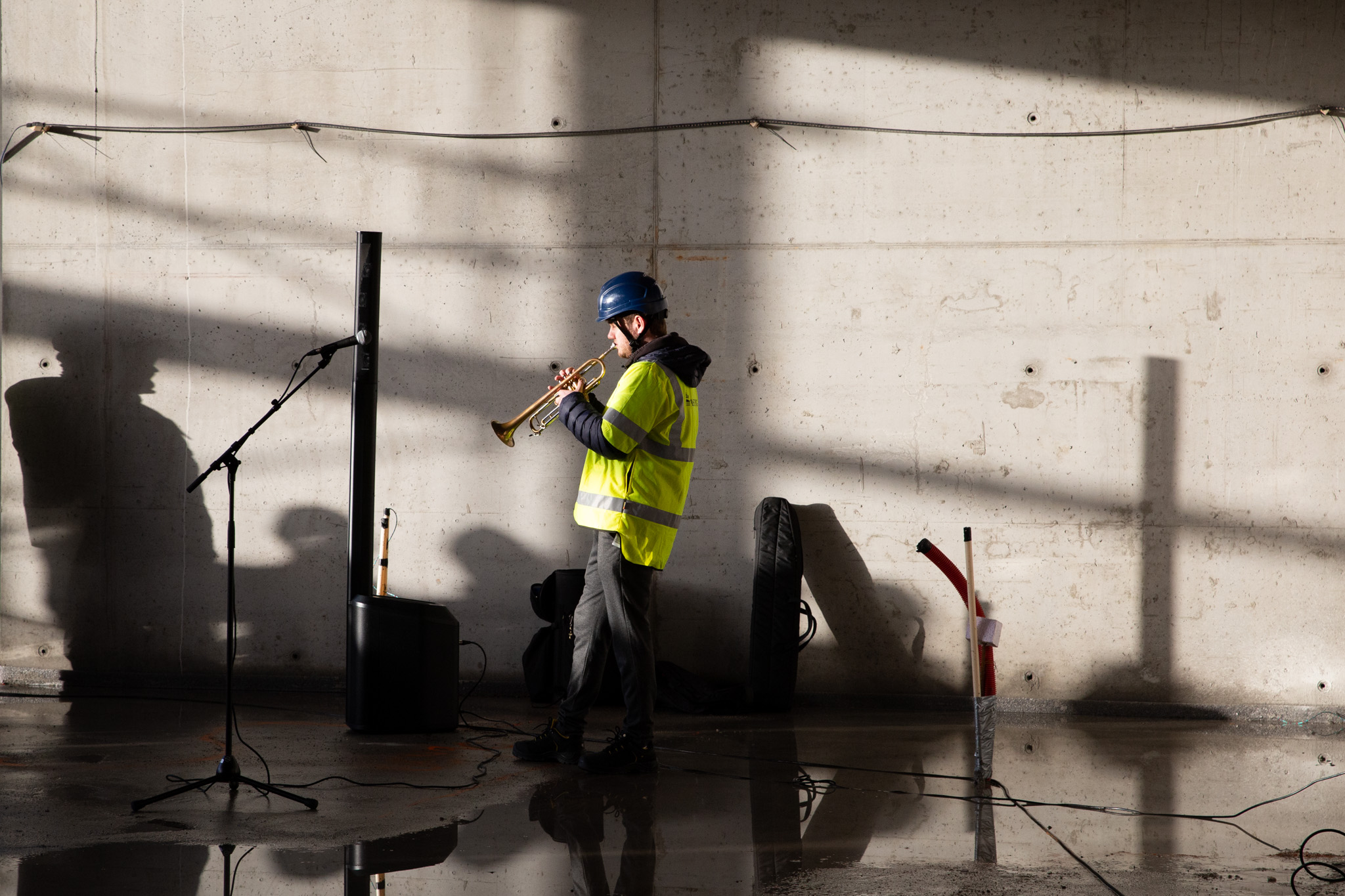
The trumpet of student Ole Martin Rosvold Haugen sounded beautifully in the unfinished brick building.
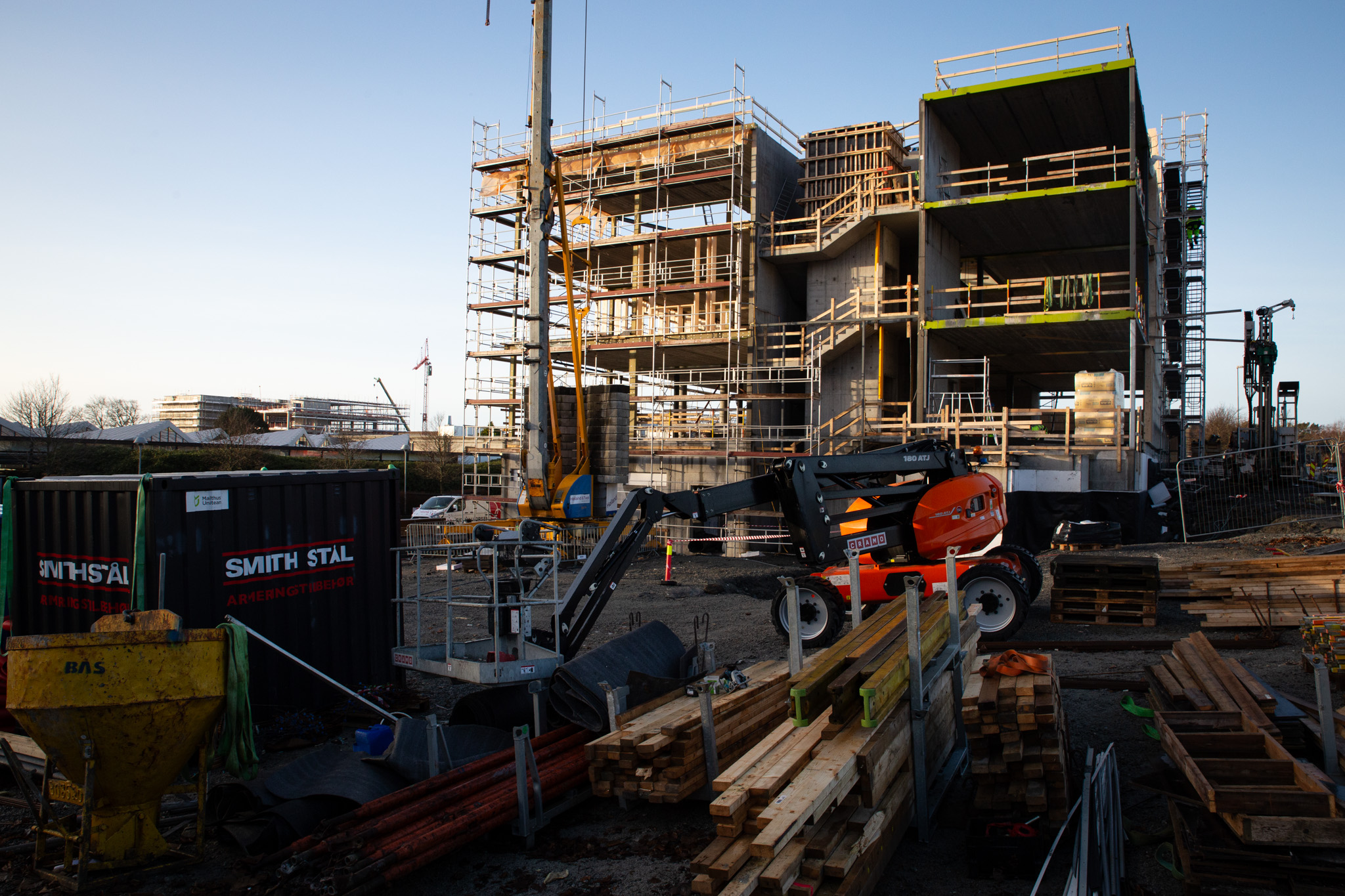
The UiS Energy Central will be completed by 2025.
Time capsule for the future
The student leader in the student organisation StOr, Joakim Ramsland, pointed out that the students now have access to top electrical equipment in a stimulating learning environment.
"The power laboratory on the fourth floor will make UiS more attractive to electrical and energy students who wish to study in Stavanger, Ramsland said before receiving a time capsule from UiS and Statsbygg.
"This time capsule contains UiS's strategy with green transformation as the most central investment area. We have also included other topical documentaries in the capsule. If the building is to be refurbished in 100 years, our descendants will be able to see what we did 100 years ago to combat the climate crisis," said Ramsland.
Lots of drilling activity on campus
Throughout the autumn and early winter 2024, 119 wells have been drilled on the university's premises. Most with a depth of over 300 metres. For Statsbygg, this is the first time such a comprehensive energy efficiency measure has been carried out on such a large and existing building mass.
Previous energy sources for UiS consisted of gas, electric boilers and local cooling machines. A new solution with geothermal heat pumps will provide a significant reduction in CO2 emissions and reduce the consumption of purchased energy.
Laboratory for optimisation of geothermal energy
The energy central will be used for applied research and will become a unique laboratory within geothermal energy.
"Our academic community must be able to retrieve data and use the centre as a living laboratory for geothermal heating, which is growing in Europe and which has great opportunities here in Norway as well," explains UiS professor Mohsen Assadi.
The lab will make teaching and research on geothermal rock heat possible. As soon as the building is finished and the lab is ready, the researchers will use advanced modeling techniques based on machine learning and artificial intelligence to develop models for monitoring and optimising operations in real time.
Electric power laboratory for students
In addition to the rock heating laboratory, the entire fourth floor will house an electricity lab for the students. Money to equip the lab is secured thanks to the Ulla-Førrefondet.
"This building will contribute to a modern electricity investment which is absolutely fundamental to being able to train the skills needed for the green shift," says rector Klaus Mohn.
The rector points out that UiS is doing its part to create the conditions to deliver relevant energy education that society needs.
Text: Karen Anne Okstad, UiS
Photo: Kjersti Riiber, UiS